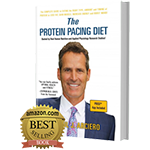Recently, I came across this statistic… more than 60% of Americans (or, 2 out of 3 people) make New Years’ resolutions, mostly to get healthier (>85%), but only 8% are successful in achieving their resolutions. Why is this? How can so many well-intentioned and determined people fail at such a noble, worthwhile and healthy cause? We have an abundance of easily accessible information on how to exercise, eat healthy, and manage our stress, so it’s not a result of not knowing what or how to do it. Or, is it?
In my own experience working with hundreds of people on a regular basis of all ages, fitness levels, and health status, the most common complaint I hear on their quest to become healthier is ‘I don’t know what to do or how to do it!’ In other words, despite the massive amount of health information we have at our fingertips, most of us struggle making sense of it or having a clear understanding of what steps to take. It has become a case of “information overload” that has created confusion, frustration and an epidemic of inaction, leading to an opposite effect of what it was designed to prevent — poor eating habits, physical inactivity, stress, and disease.
I have devoted my life’s work to helping others navigate the wellness landscape in an easy-to-follow path leading to optimal health and performance. For example, I’ve developed an exercise program I will share with you over the next 4 monthly blogs. This program is based on my scientifically proven “PRISESM” exercise protocol. PRISESM is my acronym for Protein (P); Resistance (R); Interval (I); Stretching (S); and Endurance (E) exercise training. I also like the name because it reminds me to get up and move! While simple in concept, it may be challenging for some to apply to their everyday life, but I will help you develop simple strategies and techniques to make PRISE part of your daily routine. Before I introduce each of the PRISE exercise components it’s important to follow two important steps: 1) obtain clearance from your healthcare professional to begin participating in an exercise program, and nearly all of them will be thrilled to support you on this mission, and 2) learn how to choose an appropriate exercise intensity to avoid injury and benefit from the exercise. To make this second step easier for people, I have developed Dr. Paul’s Intensity Scale for Exercise to help people perform exercise at a level that is safe and effective for improving their health, but is also fun!
The most common mistake people make when they begin an exercise program is exercising at the wrong intensity level. For example, some exercise too vigorously and get injured and don’t enjoy it, while others don’t push hard enough and don’t see any results. In both cases, the end result is most of them quit! Dr. Paul’s Intensity Scale for Exercise (see below) is an effective solution to help people choose the proper exercise intensity so they reduce their risk for injury, see results, and enjoy it! My scale will serve as a helpful guide when performing the RISE exercise routines. I encourage you to use the scale on your own for the next month, but aim for a level of 4-6. Then, starting next month, I will introduce the first of the PRISE exercise routines, resistance (R), and the appropriate intensity level.

